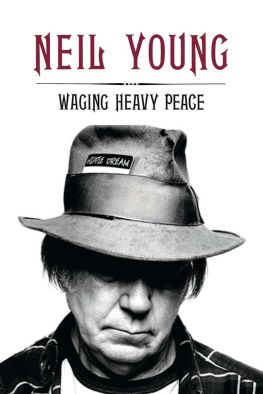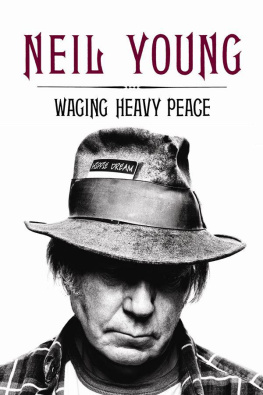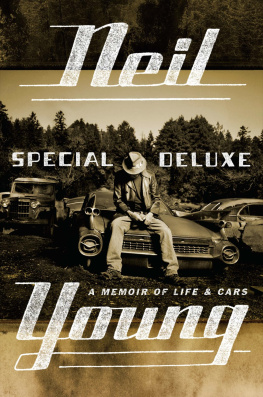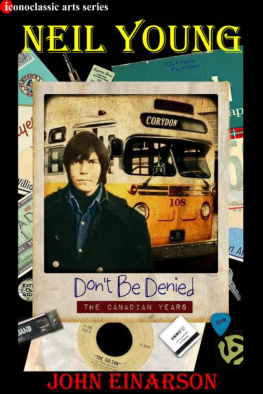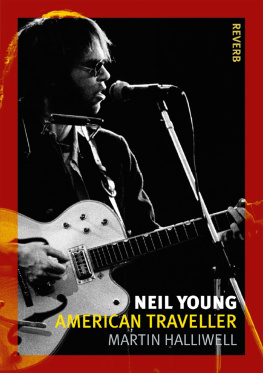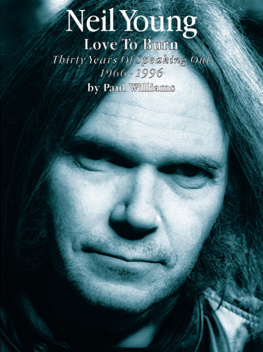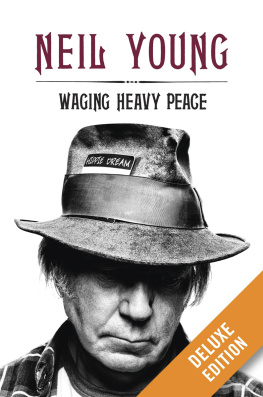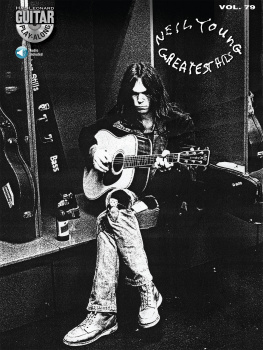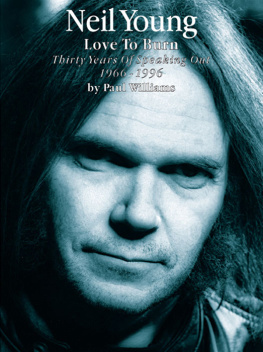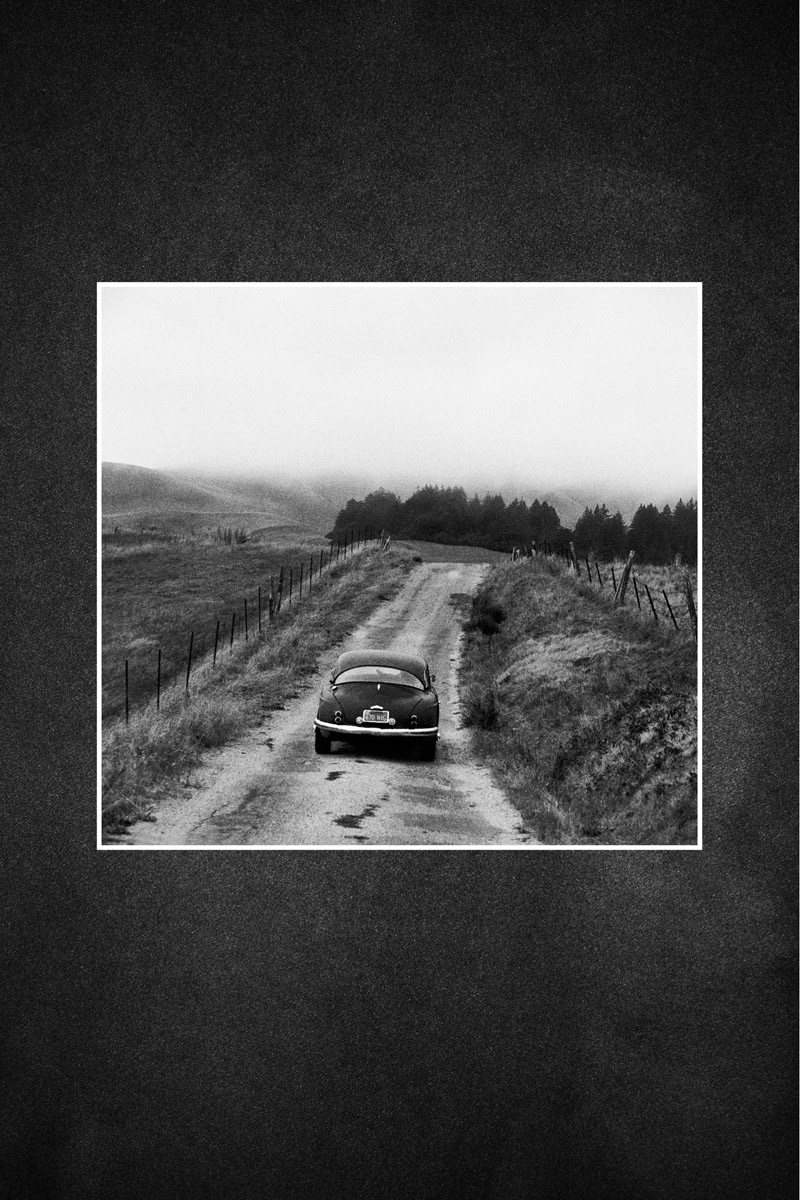Waging Heavy Peace
A Hippie Dream
NEIL YOUNG

BLUE RIDER PRESS
a member of Penguin Group (USA) Inc.
New York

Published by the Penguin Group
Penguin Group (USA) Inc., 375 Hudson Street, New York, New York 10014, USA Penguin Group (Canada), 90 Eglinton Avenue East, Suite 700, Toronto, Ontario M4P 2Y3, Canada (a division of Pearson Penguin Canada Inc.) Penguin Books Ltd, 80 Strand, London WC2R 0RL, England Penguin Ireland, 25 St Stephens Green, Dublin 2, Ireland (a division of Penguin Books Ltd) Penguin Group (Australia), 250 Camberwell Road, Camberwell, Victoria 3124, Australia (a division of Pearson Australia Group Pty Ltd) Penguin Books India Pvt Ltd, 11 Community Centre, Panchsheel Park, New Delhi110 017, India Penguin Group (NZ), 67 Apollo Drive, Rosedale, North Shore 0632, New Zealand (a division of Pearson New Zealand Ltd) Penguin Books (South Africa) (Pty) Ltd, 24 Sturdee Avenue, Rosebank, Johannesburg 2196, South Africa
Penguin Books Ltd, Registered Offices: 80 Strand, London WC2R 0RL, England
Copyright 2012 by Neil Young
All rights reserved. No part of this book may be reproduced, scanned, or distributed in any printed or electronic form without permission. Please do not participate in or encourage piracy of copyrighted materials in violation of the authors rights. Purchase only authorized editions.
Published simultaneously in Canada
The excerpt is from Shakey by Neil Young and Jimmy McDonough, copyright 2002 by James McDonough and Neil Young. Used by permission of Villard Books, a division of Random House, Inc.
Library of Congress Cataloging-in-Publication Data
Young, Neil, date.
Waging heavy peace : a hippie dream / Neil Young.
p. cm.
ISBN 978-1-101-59409-4
1. Young, Neil. 2. Rock musiciansCanadaBiography. I. Title.
ML420.Y75A3 2012 2012026138
782.42166092dc23
[B]
While the author has made every effort to provide accurate telephone numbers, Internet addresses, and other contact information at the time of publication, neither the publisher nor the author assumes any responsibility for errors, or for changes that occur after publication. Further, the publisher does not have any control over and does not assume any responsibility for author or third-party websites or their content.
Penguin is committed to publishing works of quality and integrity.
In that spirit, we are proud to offer this book to our readers;
however, the story, the experiences, and the words are the authors alone.
Driving the Jensen at the ranch, 1988.
For Ben Young, my Hero, my Warrior.
And his mother, brother, and sister.
Contents
Preface
When I was young, I never dreamed of this. I dreamed of colors and falling, among other things.
Chapter One
BROKEN ARROW RANCH, SPRING 2011
The Young Family
Father Neil, Mother Pegi,
Children Amber and Ben
I pulled back the plastic sticky tape from the cardboard box. Wrapping paper was on the ground around my feet. Ben watched from his chair, and Amber and Pegi sat around me. I carefully lifted the heavy weight out of the box. It was further wrapped in packing paper and then a final layer of some foamy quarter-inch-thick protective material. Then it was revealed: a locomotive switcher with handmade Lionel markings. Curiously, it was not a real Lionel. It must have been some kind of prototype. There was a white typewritten sheet in the box from Lenny Carparelli, one of the endless stream of Italian-Americans connected in one way or another to the history of Lionel, a company I still have a small share of. I read the sheet. The model was from General Models Corporation. It was a beautiful switcher, and it was indeed the prototype that Lionel had used to create its own model. As the letter pointed out, this happened back in the days before corporate lawsuits and trade secrets invaded every little area of creativity and design.
Pegi always gives me Lionel collectibles for holidays, and I now have a very extensive collection of rarities, all proudly displayed behind glass in a room with a giant train layout. It is not a normal train layout: The scenery is made up of redwood stumps for mountains and moss for grassy fields. The railroad has fallen on hard times. A drought has ensued. Track work, once accomplished by hardworking teams of Chinese laborers, has been left dormant. Now expensive, highly detailed Lionel steam engines from China traverse the tracks. My railroad is historic in its own way as the site of many electronic development programs where the Lionel command control and sound systems were conceived and built from scratch; then the prototypes were tested and the software was written, tested, rewritten, and retested. Heady stuff, this electronics development. It all started with Ben Young.
Ben was born a quadriplegic, and I was just getting back into trains at the time, reintroducing myself to a pastime I had enjoyed as a child. Sharing the building of the layout together was one of our happiest times. He was still in his little bassinet when the Chinese laborers originally laid the track, thousands of them toiling endless hours through the nights and days. He watched as we worked. Then, after months, it eventually came time to run the trains, and later I devised a switch system run by a big red button that he could work with his hand. It took a lot of effort, but it was very rewarding for him to see the cause and effect in action. Ben was empowered by this.
That was thirty-three years ago, though, and now I have the Windex out and I am cleaning the glass doors on the display shelves where my prized Lionel possessions are kept safe and sound for all to see. Not that anybody ever comes here. You could count the visitors on your hand. Which is unfortunate, considering the amount of care that has gone into the display. The display and layout create a Zen experience. They allow me to sift through the chaos, the songs, the people, and the feelings from my upbringing that still haunt me today. Not in a bad way, but not in an entirely good way, either. Months go by with boxes piled everywhere and trains derailed with dust gathering on them. Then, miraculously, I reappear and clean and organize, working with every little detail for hours on end, making it all run perfectly again. This seems to coincide with other creative processes.
I remember one day David Crosby and Graham Nash were visiting me at the train barn during the recording of American Dream, a lot of which we did on my ranch at Plywood Digital, a barn that was converted to a recording studio. We had a truck parked outside full of recording equipment and were working on several new songs. We were all pretty excited about playing together again. Crosby had recently gotten straight, was recovering from his addiction to freebase, had just completed jail time he got for something having to do with a loaded weapon in Texas, and was still prone to taking naps between takes. His system was pretty much in shock, and he was doing the best he could because he loves the band and the music so much. There is no one I know who loves making music more than David Crosby. Graham Nash has been his best friend for years, through thick and thin, and they sing together in a way that shows the depth of their long relationship.

